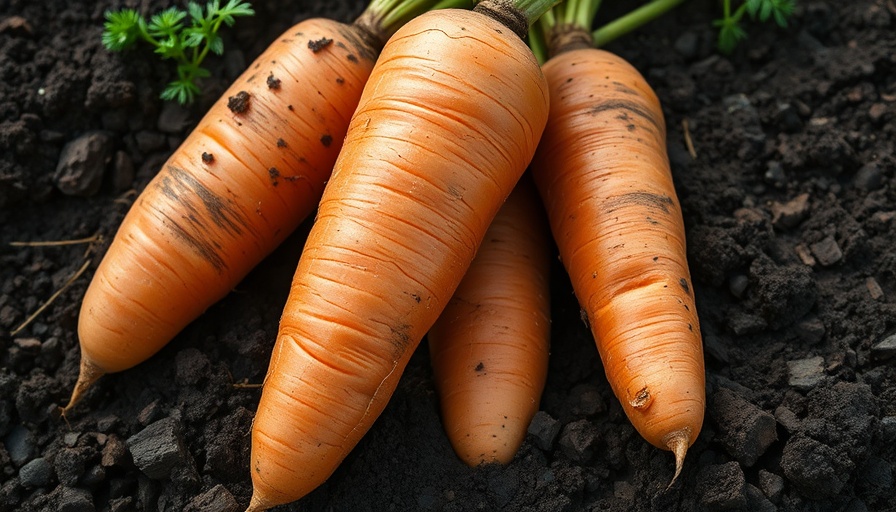
Understanding the Root Causes of Cracked Carrots
As any dedicated gardener knows, pulling up root vegetables can feel like unveiling gifts from the earth. There’s an ensuing thrill and joy that comes from discovering perfectly shaped and vibrant carrots. However, for many gardeners, the disappointment of unearthing cracked roots can overshadow that excitement. Understanding why carrots crack and how to prevent it is essential for cultivating a fruitful and satisfying garden.
What Causes Carrots to Crack?
Cracked carrots are often the result of inconsistent watering—a fundamental element that significantly affects root growth. Carrots, like many delicate plants, thrive on steady moisture levels. A sudden influx of water can cause their cells to swell dramatically, leading to pressure that ultimately splits the roots.
This natural phenomenon is particularly prevalent during the sweltering months of summer or in regions facing drought. Interestingly, colder weather can also play a role; when carrots freeze and subsequently thaw, their cells expand and contract, which may result in cracking. Awareness of these factors is crucial for gardeners who wish to protect their bounty.
Best Practices to Prevent Cracking
Fortunately, there are several effective strategies to minimize the risk of cracked carrots.
Soil Amendments Matter
Improving soil quality is a foundational step. Adding compost not only enriches the ground but helps retain moisture levels. Additionally, by incorporating organic material, gardeners can create a more nutrient-dense environment that reduces shock from sudden watering.
Selecting the Right Cultivars
Choosing resilient carrot varieties can also make a difference. Some cultivars are specifically bred to be crack-resistant, making them well-suited for various conditions. Researching and planting these varieties can dramatically reduce the occurrence of splitting.
The Role of Mulching
Implementing mulch in your carrot garden offers dual benefits: it helps retain soil moisture and suppresses weeds, which means less competition for nutrients. By shading the roots, it creates an ideal environment for steady growth.
Water Wisely
Timing your watering schedule is another critical aspect of carrot care. Carrots typically need about an inch of water per week, but during heatwaves, they may require more frequent watering. A moisture meter can help ensure that the soil remains consistently hydrated, thus preventing rapid changes in moisture levels that lead to splits.
Harvest Tips for Healthy Carrots
Certainly, the harvesting process is just as vital as pre-planting care. Timely harvesting—neither too early nor too late—ensures that carrots maintain their texture and quality. If left in the ground too long, overgrown roots may develop deficiencies or cracks.
The Edibility of Deformed Carrots
Finally, a common question rises: are cracked carrots still edible? Absolutely! Even if they don't meet the aesthetic standards often sought after at the grocery store, cracked carrots are delicious and nutritious. Embracing these 'imperfections' can lead gardeners to greater satisfaction with their overall yield.
Reflecting on Gardening as a Journey
Ultimately, the journey of gardening is not merely about perfect produce but also about learning from past crop failures and celebrating the small victories along the way. By applying thoughtful techniques and nurturing their plants with patience, gardeners can enjoy a bountiful harvest of carrots that align with their expectations.
For all the aspiring green thumbs out there, keep these tips in mind as you're cultivating your own vegetables. With every seed sown, there's a world of potential waiting to be unlocked.
 Add Row
Add Row  Add
Add 




 Add Row
Add Row  Add
Add 

Write A Comment